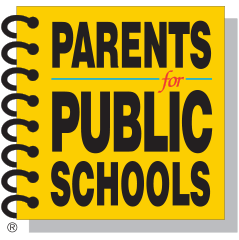Today’s blog entry has been written by Jeanne Jehl, the president of the Parents for Public Schools Board of Directors. Jehl has been an assistant to the superintendent in the San Diego City Schools. She directed a study of school-linked services at the U.S. Department of Education, and promoted federal-state partnerships to strengthen families with the White House Domestic Policy Council. As an independent consultant, she has worked with the Coalition for Community Schools, the Collaborative Communications Group, and the Annie E. Casey Foundation. Jeanne and her husband, Joseph, live in Annapolis, Maryland.
The recent buzz over “XQ: The Super School Project” (Washington Post, September 7 2017) feels like déjà vu all over again. Beginning in the 1990s, “school reform” was very much in vogue, with foundations and other philanthropists investing in school districts, with the goal of measurably improving student achievement. And the No Child Left Behind Act (NCLB), enacted in 2001, created a framework for measuring student achievement, as well as school and district quality, through extensive yearly standardized testing. But a decade and more of NCLB yielded little positive change. So it is tempting to shift the emphasis to redesigning individual schools — with technology, career preparation, or the arts, for example.
But “redesign” alone is too little, and high school is too late for too many kids who have decided that school is not for them. Low-income children, many of them African American, Hispanic or Native American, are often behind when they enter school if they lack the supports and opportunities they need for early learning. Children with undiagnosed physical problems or learning disabilities may miss out on early learning. Children from families where English is not the first language need skilled, specialized instruction. And all children — all children — need to learn in a welcoming, supportive environment. Before kids reach high school, they all need super schools — with
- A positive vision for the future of all students
- Skilled, dedicated, well-compensated teachers
- A challenging coherent curriculum based on recent research and established science
- An environment that supports staff, students, and families
- Opportunities for learning in arts, mathematics, science, technology, and more
- Family and community engagement
We know how to do this, and many excellent schools exist now. So why aren’t there “Super Schools” in every city and town in the United States?
We don’t want to pay for them. The US spends less than other countries on public education. (See the September 18 issue of the Hechinger Report). So children spend less time in school and have less access to good materials, let alone super technology. In Mississippi, for example, the legislature has refused to provide an adequate level of support for schools except for single year, despite a 1997 law establishing that level.
Americans are getting older, and fewer adults have firsthand experience with public schools. With distance comes detachment and disinvestment.
There is a notion that some kids deserve Super Schools more than others. Top schools — with top test scores — exist primarily in communities that are able and willing to pay for them. Children in lower-income cities and rural areas rarely attend schools like these.
Public schools need supporters and advocates more than ever. This is the mission of Parents for Public Schools: to advance the role of families and communities in securing a high quality public education for every child. With a network of chapters rooted in communities, intensive parent engagement and mobilizing work in Mississippi, and Parent Engagement Programs (PEP) in schools and early childhood programs, PPS works toward the goal of Super Schools for all kids.

